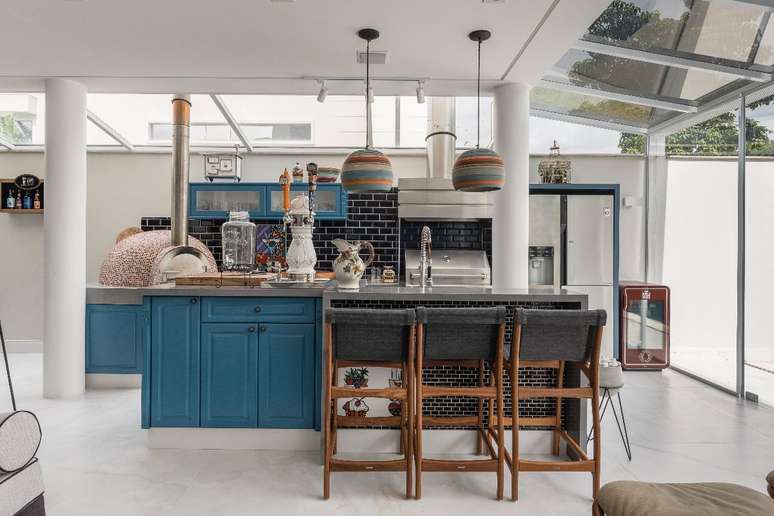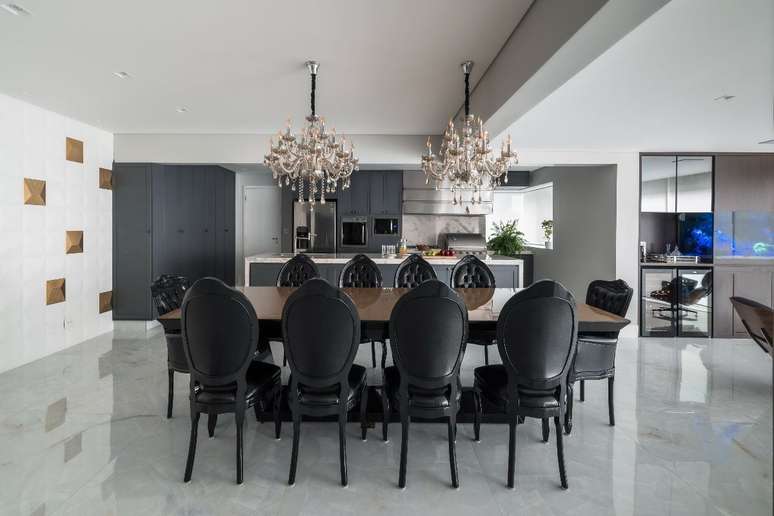The architects explain how to adopt different references in the same house
When designing a house or apartment, the natural path of a project is to follow an architectural language that will accompany everything, from the work to the definition of the color palette, furniture and decorative objects.
Often not a single style encompasses the preferences of the residents: to satisfy the references that each one desires, the architectural professional intervenes to combine and make the project the realization of a dream. “Who said that furniture must follow a single style?”, underlines Priscila Tressino, architect of PB Arquitetura.
Below, Priscila Tressino, together with her partner, architect Bernardo Tressino, and architects Danielle Dantas and Paula Passos talk about the possibility of mixing different aesthetics and creating something uniquely unique. Watch!
1. Combine similar aesthetics
As a starting point, the two emphasize the importance of listing residents’ preferences and interests. Questions such as the colors they like best and references to textures, backgrounds, prints and so on Furniture design These are some of the points that help architects sit down to discuss the best matches.
“Nothing is obvious and there is no ‘cake recipe’ to make. So the appearance can always surprise! With our practice in the office, we have learned that each client’s personal style, whether by age, purchasing power or anything else is, it does not dictate the rule for the development of the project. We listen to each of them a lot and we create everything by responding to the expectations they present to us”, comments Bernardo Tressino.
It is from these choices that the mix of tastes gives way to the harmony of flavors styles in decoration. According to the professional duo, the process becomes more simplified when the aesthetic has more similar characteristics, such as minimalism and industrial. Attention must be doubled when the profiles are opposite: in these cases it is necessary to avoid the two ‘arguing’ in terms of protagonism, creating a disharmonious environment.
2. Establish the key points
The adoption of distinct decorative characters can be present both in a single room or sprinkled in the other spaces of the residence. The search for counterpoints in subtle balance is the architect’s greatest challenge.
“Richness lies in the details and the great idea is to invest in creatively arranged highlights. Interior architecture opens up horizons for us to go beyond the obvious and work on a unique look,” explains Priscila Tressino.
From a current perspective, he explains that a widely practiced example is the application of straight and monochromatic frames, taking a more modern orientation. “It replaces ‘rococo’ styles very well with the golden lilies typical of the classic”, he adds.

3. Mix textures and materials
In general, the color palette and the choice of materials play the most important role in the result, but you can work on other points of contrast, such as the mix of textures, the new with the old, the simple, the elaborate and the straight, organic shapes. “The important thing is to define what will stand out and what scenography will be seen in the background”, determines Bernardo Tressino.
For those who want to insert a touch of classic into the modern, the two list how you can work on the decoration:
- Noble materials such as marble, silk, crystal;
- Classic furniture such as chairs, armchairs, Provençal joinery and inherited pieces that can be revitalized;
- Ornaments: boiseries, chandeliers and crystal vases, prints romantic with floral and arabesque motifs, tapestries, wallpapers, metals in shades of gold or brass (including handles, railings and taps and other accessories for kitchens and bathrooms).
Far from investing only in black and white, they emphasize that creativity and layout are essential for those looking for decor with more than one identity. The right measure in the application of the elements gives life to projects with a unique personality.
4. Invest in stunning pieces
Investing in standout pieces is an effective strategy for merging different styles into a cohesive decor. Elements such as modern lamps, vintage mirrors or boldly designed chairs work as focal points that draw the eye and establish a visual connection between the different styles present in the room. . environment.
5. Use items with history
Adding items that have personal meaning and history to a room’s decor is an effective way to blend personality and authenticity into a space. When we incorporate objects that carry memories and stories, the result is decor that goes beyond aesthetics and becomes an expression of who we are. These items can range from travel souvenirs to family heirlooms or even local artwork that resonates with our experiences and emotions.
“They play a very interesting role in decoration, as they add something extra authentic to spaces. Family photographs are the most traditional, but this package also includes travel souvenirs, family heirlooms such as musical instruments, typewriters, among others”, conclude architects Danielle Dantas and Paula Passos.
By Emilie Guimarães
Source: Terra
Ben Stock is a lifestyle journalist and author at Gossipify. He writes about topics such as health, wellness, travel, food and home decor. He provides practical advice and inspiration to improve well-being, keeps readers up to date with latest lifestyle news and trends, known for his engaging writing style, in-depth analysis and unique perspectives.









